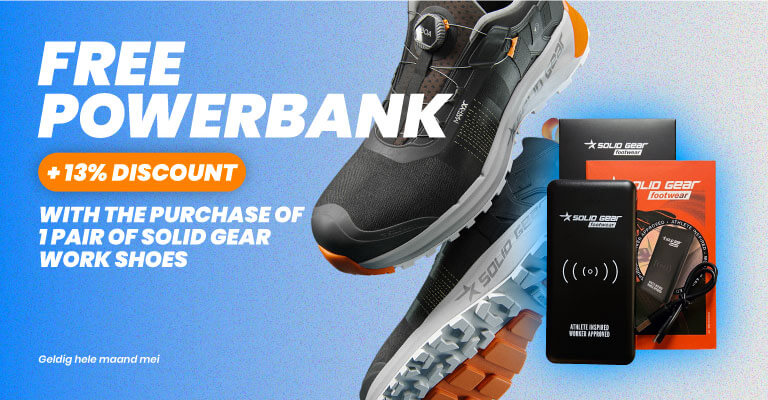
Protect your feet with top quality safety shoes!
Safety shoes are an indispensable part of work clothing for many. They provide essential protection and comfort, allowing you to work safely and efficiently. At 71Workx.com we have a wide range of safety shoes that meet the highest safety standards and offer comfort. View our offer and make sure your feet are well protected!













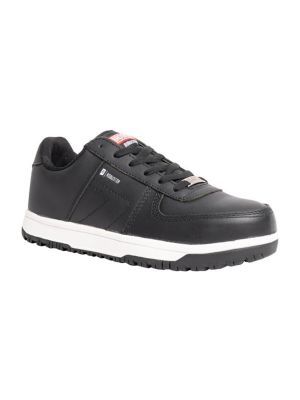
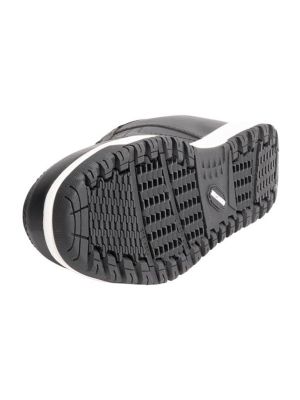

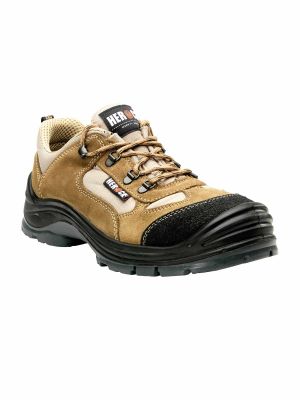
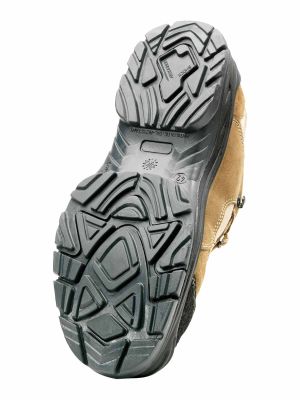

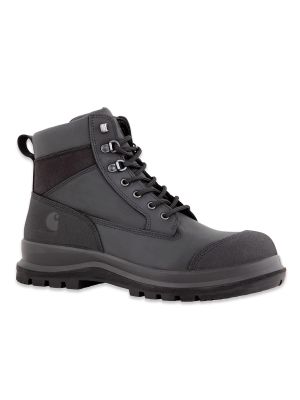










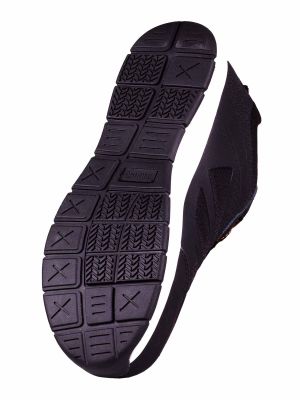


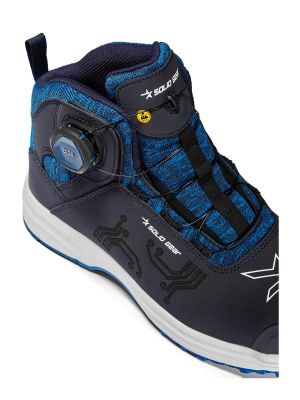






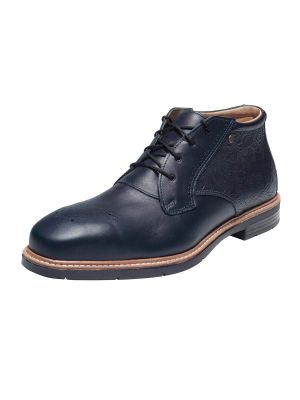
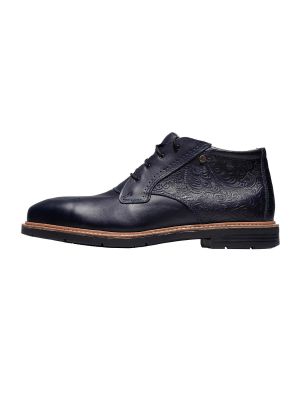





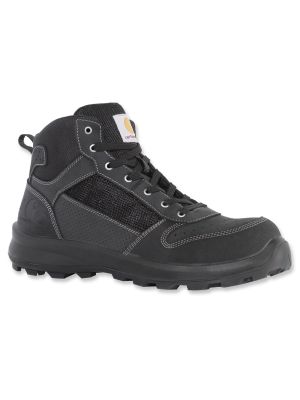







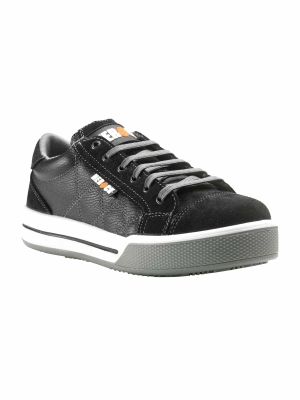
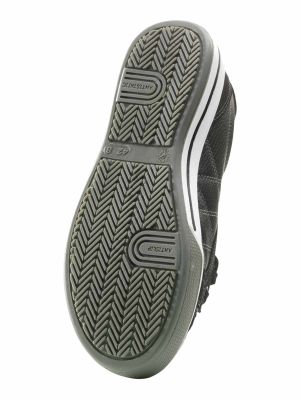




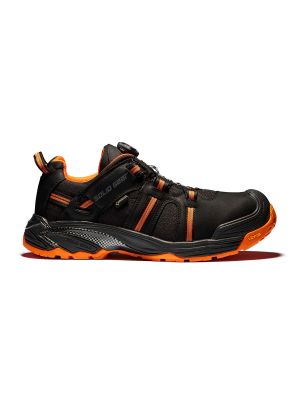










































Protect your feet with top quality safety shoes!
Safety shoes are an indispensable part of work clothing for many. They provide essential protection and comfort, allowing you to work safely and efficiently. At 71Workx.com we have a wide range of safety shoes that meet the highest safety standards and offer comfort. View our offer and make sure your feet are well protected!
What exactly are safety shoes?
Safety shoes are designed to protect the feet while working in various environments. They provide comfort and safety to prevent injuries. Wearing the right safety shoes is essential and mandatory for anyone working in hazardous environments, such as construction sites, factories, warehouses and the catering industry.
Why are safety shoes important?
Wearing safety shoes is essential for your safety. They protect you from falling objects, slipping, sharp objects and electrical hazards. In addition, they provide comfort and support, which helps to reduce fatigue and pain.
Different models of safety shoes
There are many different models of safety shoes and safety shoes available at 71workx. Below we discuss the most common types:
- Low safety shoes: Provide the right support without restricting freedom of movement, ideal for different working environments. Available in various designs, such as a sporty work shoe. Solid Gear is known for its sporty look, with popular models such as the Venture 2. We also have neat models, such as the Barocco from Emma safety shoes.
- High models: Provide extra protection and support, especially around the ankles. The best-selling work shoe at 71workx is the Carhartt Detroit or the Solid Gear Bravo GTX.
- Safety boots: Designed for extreme conditions, these boots are waterproof and protect against chemicals, oils and acids. They often have a composite or steel toe cap and a puncture-resistant midsole, ideal for agriculture, construction or fishing.
- Safety sandals: Perfect for warm working conditions. They ventilate well and keep your feet cool, while offering protection with a secure toe cap and non-slip sole, ideal for indoor warehouse work. Take the Solid Gear Vapor 3 Air as an example.
- Safety clogs: You read that right, there are also work clogs available with various safety standards that protect you. Popular brands are Strövels and Sika.
- Women's safety shoes: There are also safety shoes specially designed for women. These models are narrower and more elegant, but offer the same protection and comfort as unisex models. For the best women's safety shoes, 71workx is the right place for you, such as the Reebok Royal Glide safety shoes, which look just like a real sneaker!
Material and technology
In addition to different models and designs, you also have to take into account the materials and technologies the shoes are made of. Below we have listed a few:
- Outsole: Safety shoes are often equipped with different types of soles, such as PU (polyurethane), rubber or TPU (thermoplastic polyurethane). These materials each offer specific properties:
PU soles (Polyurethane): Provide excellent shock absorption and are lightweight.
Rubber soles: Provide good grip and are durable.
TPU soles (Thermoplastic Polyurethane): Combines the properties of PU and rubber for optimal performance.
You also have codes for slip resistance:
SR: Non-slip outsole
SRA: anti-slip tested on ceramic tiles moistened with sodium lauryl sulphate
SRB: anti-slip tested on steel floors with glycerol
SRC: anti-slip tested for a slip resistance of SRA and SRB. - Midsole: Located between the outsole and insole of footwear and offers several protection options: steel midsole for excellent protection against sharp objects, Kevlar midsole for flexible and lightweight protection, TPU midsole for a good balance between flexibility and protection, and PU midsole for lightweight cushioning and comfort for prolonged standing and walking.
- ESD (Electro Static Discharge) technology: This discharges electrostatic charge to prevent damage to vulnerable objects and equipment. They have an electrical resistance between 0.1 and 100 MegaOhm. This distinguishes them from shoes with anti-static properties, which only dissipate electricity.
- Safety toes: These can be made of different materials, such as a steel toe, aluminum safety toe, plastic toe or composite. They protect the toes against impact and compression according to EN-ISO 20345 standards, which is 200 Joule (J) and an indentation resistance of 15,000 Newtons. This means that, for example, a car in a collision with an energy of 200 Joules can withstand a force equivalent to 15,000 Newtons before serious damage or dents occur.
The difference between a steel toe and composite is that a steel toe offers heavy protection against impact, while a composite toe is lighter and better insulates against heat and cold. These are often found in lightweight safety shoes and are metal-free. - Protection against water and chemicals: Waterproof safety shoes (code WR or WPA) keep your feet dry in wet conditions. At the same time, a breathable inner lining or material provides comfort and prevents overheating. Materials such as Gore-Tex®, mesh lining or Cambrelle lining are often used. FO means that the shoes are resistant to gasoline and oil.
- Heat and cold protection: Fire-retardant materials in safety shoes are crucial for sectors with fire risks. They must meet the HRO code, which means that they can withstand a temperature of 300 degrees Celsius for at least 1 minute. HRO HI offers even better insulation, with a temperature inside the shoe below 22 degrees Celsius. A CI designation means that the shoe offers special insulation against cold conditions.
- Reflective material: Reflective details improve visibility in dark or dimly lit conditions, increasing the wearer's safety.
- Lightweight work shoes: Modern work shoes use lightweight materials such as EVA (ethylene vinyl acetate) and Kevlar to reduce the weight of the shoes without sacrificing protection and durability. This reduces fatigue and makes long-term wearing more comfortable. Lightweight safety shoes weigh between 300 to 700 grams. The lightest safety shoes we recommend are the Reebok Excel Light and the Grisport Horizon.
- BOA dial closure: The BOA closure offers an innovative alternative to traditional laces. This dial closure ensures a precise fit and makes putting on and taking off shoes quick and easy.
Choosing the right safety shoe
When choosing your shoes, you should consider the following factors:
- Safety standards: Choose shoes that meet EN ISO 20345 for protection.
Consult your employer: Ask about the safety standards that apply to your workplace. - Type of work: Choose shoes that suit your working conditions.
- Material and design: Choose the right material and model by reading the product description carefully. Leather shoes offer durability and protection, while breathable materials such as mesh or cambrelle lining are better for heat dissipation. Depending on the desired ankle protection, you can choose between high or low models.
- Fit and comfort: Ensure a good fit, especially if you work long hours. Try different sizes and brands to find the best one.
The new safety standard from 2022
EN ISO 20345:2022 is a European standard that sets specific requirements for safety shoes to ensure the safety of the wearer. This standard is an update of the previous EN ISO 20345:2011 and contains improvements and additional criteria to better suit current working conditions. The most important changes in this standard include:
- Addition of protection levels S6 and S7.
- Expansion of the puncture protection classification with the codes PL (4.5 mm) and PS (3 mm) for soles without metal puncture protection.
- Introduction of a new code for slip resistance (SR).
- Clearer distinction between water resistance (WR) and water resistance (WPA).
- Addition of a toe wear (SC) test requirement.
- Addition of a ladder grip (LG) test requirement.
This new standard introduces new safety classes. Safety shoes that meet the old ISO standard will continue to bear the quality mark for a maximum of five years. So a safety shoe that was certified according to the old standard in 2022 will remain valid until 2027.
All safety classes explained
Safety shoes are classified according to different standards that indicate the degree of protection:
Safety shoes
- SB: This is basic safety. Shock and crush resistant shoe tips (safety toe). Robustness, harmlessness and effectiveness of the materials used. Ergonomics and comfort of the shoe and slip resistance.
- S1: SB + A and E. So it is an SB, but also with closed heel, antistatic properties (A) and energy absorption in the heel (E). Suitable for work in dry conditions. What does antistatic actually mean? Your safety shoes should not build up static electricity. Charges can accumulate during work, and it is precisely their discharge that is dangerous. This can cause sparks, which cannot be used in explosion-prone areas.
- S1P: S1 + P. An S1 shoe, combined with a steel anti-perforation sole (P), forms an S1P shoe. The difference between S1 and S1P is therefore in the sole. S1P, S1PL and S1PS shoes are ideal for work in dry conditions where sharp objects are on the ground.
S1PL: S1 + PL. Is an S1, plus a textile anti-perforation sole tested on a 4.5mm nail (PL).
S1PS: S1 + PS. Is an S1, plus a textile anti-perforation sole tested on a 3mm nail (PS). - S2: S1 + WPA. It is an S1 with a dirt and water repellent upper that lasts at least 60 minutes (WPA), making it an S2. The difference between S1 and S2 therefore lies in the water-repellent upper material. These shoes are suitable for work in wet conditions, but please note that they are not completely waterproof.
- S3: S2 + P. An S2 shoe with a steel anti-perforation sole (P) qualifies as an S3 standard. This is the most common and worn class of work shoe. S3, S3L and S3S are suitable for various working conditions (dry and wet), where your feet are optimally protected. Don't worry about that.
S3L: S2 + PL. Is an S2, plus a textile anti-perforation sole tested on a 4.5mm nail (PL).
S3S: S2 + PS. Is an S2, plus a textile anti-perforation sole tested on a 3mm nail (PS). - S4: This applies to safety boots made of rubber and plastic, which thanks to these materials are completely waterproof and easy to keep clean. They meet the S1 standard, with a closed heel, anti-static properties, a resistance to 200 joules, an indentation resistance of at least 15,000 Newtons and energy-absorbing properties. Commonly used in the food industry.
- S5: Like S4 and also applies to work boots, with a coarse profile (non-slip sole) and anti-perforation sole.
S5L: As S4, tested on a 4.5mm nail.
S5S: Like S4, tested on a 3mm nail. - S6: S2 + WR. Is an S2, plus is completely water resistant (WR). The ideal waterproof safety shoes for wet work situations.
- S7: S3 + WR. In essence it is an S3 standard, but thanks to the full water resistance (WR) it qualifies as an S7. In addition, they have a closed heel, are antistatic and have a shock-absorbing heel. The sole is fire resistant and offers water resistance for up to 80 minutes with direct water contact. They protect against perforation and heavy objects. These waterproof safety shoes are perfect for wet working conditions.
S7L: S3L + WR. Is an S3L, plus is completely water resistant (WR).
S7S: S3S + WR. Is an S3S, plus it is completely water resistant (WR).
Professional shoes
These shoes are worn in work environments with less risk. You can recognize them by the O, which stands for 'Occupational'. There are different variants within this standard, which we have listed for you:
- OB: This is basic safety. It has no nose protection, but does have ergonomics and comfort, and has slip resistance.
- O1: OB + A and E. Is an OB, plus it is anti-static (A) and has a shock-absorbing heel (E) with a closed heel.
- O2: O1 + WPA. Is an O1, plus it has water resistant shaft material (WPA).
- O3: O2 + P. Is an O2, plus a steel anti-perforation sole (P).
- O4: It's an O2, but in this case it's not a shoe but a boot.
- O5: It's an O3, but in this case it's not a shoe but a boot.
- O6: O2 + WR. Is an O2, plus it's completely water resistant (WR).
Additional requirements for safety shoes and occupational shoes:
A: Anti-static
AN: Just protection
CI: Insulation against cold
HI: Insulation against heat
CR: Cut resistant
E: Shock-absorbing heel
FO: Oil-resistant sole
LG: Ladder grip
M: Protective midsole
WR: Water resistance
WPA: Complete water resistance of the upper part (shaft) of the shoe
C: Partially electrically conductive
P: Anti-perforation sole for metal objects with a diameter up to ø 4.5 mm
PL: Anti-perforation sole for objects with a diameter up to ø 4.5 mm
PS: Anti-perforation sole for objects with a diameter up to ø 3 mm
HRO: Heat-resistant sole
S: Shock and crush resistant noses (200 Joules and 15,000 Newtons)
SC: Wear-resistant scuff guard
The best safety shoes for your profession or industry
We now know what the safety standards entail, but which ones do you specifically need for your work? Below we have listed a number of industries, together with the relevant standards and explanations:
- Metal industry: The risk of falling objects and sharp objects is high. Safety shoes must be sturdy and able to withstand heavy impacts. Recommended standards: S3, S5, S6 and S7.
- Electrical engineering: Electrical engineers need shoes that protect against electric shock and static electricity. Recommended standards: S1 to S7.
- Pharmaceutical: Hygiene is of great importance. Shoes must be easy to clean and protect against liquids. Recommended standards: OB to O3 and SB to S7.
- Construction company: There is a high risk of heavy impact and penetration. Strong, durable shoes are a must. Recommended standards: O3, S3, S5, S6 and S7.
- Logistics: Comfortable shoes for long working days that protect against impact and compression. The recommended safety standard is SB to S7.
- Automotive industry: As a car mechanic, your work boots must be resistant to oil and chemicals, and protect against heavy objects. Recommended standards: O2, O3, SB, S1, S1P, S2 and S3.
- Agricultural: Waterproof and slip-resistant shoes are crucial, especially in wet and muddy conditions. Recommended standards: S2 to S7.
- Hospitality: Non-slip shoes are essential to prevent slips, especially in kitchens and bars. Safety shoes are therefore often mandatory in the catering industry. Recommended standards: OB to O3 and SB to S7.
- Security: Comfortable and protective shoes for long shifts and possible physical confrontations. Recommended standards: O2, O3 and SB to S7.
- Hospital & care: Hygiene and comfort are important. Shoes must be easy to clean and protect against liquids. Appearance often also plays a more important role, and white safety shoes are often preferred. White safety shoes match well with the mostly white healthcare clothing. The recommended safety standards are OB to O3 and SB to S7.
- Food industry: Slip-resistant and water-repellent shoes that are easy to clean. Recommended standards: OB to O3 and SB to S7.
- Chemical industry: Safety shoes must be resistant to chemicals and protect against splashes. Recommended standards: O2, O3 and S1 to S7.
Maintenance of safety shoes
Regular maintenance of safety shoes is important to maintain their protective properties and prevent wear and tear. Clean them daily, use suitable cleaning products, let them dry at room temperature and check for damage. Treat waterproof shoes regularly with a water-repellent agent and avoid the washing machine. Manual cleaning is really better. Good maintenance extends the lifespan and ensures more comfort and safety.
Frequently asked questions about safety shoes
How long do safety shoes last?
The lifespan of work boots is between 6 and 12 months, depending on how often you use them, their quality, and how you maintain them. Regularly checking and replacing when worn is important for your safety and comfort. Solid Gear offers durable quality, although they are a bit more expensive, you get a longer lifespan.
When should you replace your safety shoes?
You must replace your safety shoes if the sole is worn, the upper is damaged or safety can no longer be guaranteed. Check regularly for wear and replace if necessary for optimal safety and comfort.
How many pairs of safety shoes do you need per year?
On average, you need one to two pairs of safety shoes per year, depending on how intensively you use them and the wear and tear. Choose comfort and safety that suits your work.
Are safety shoes mandatory?
In many professions, safety shoes are mandatory to ensure the safety of employees. The exact requirements may vary by sector and country.
How do I know what size safety shoes I need?
It is important to try on safety shoes before purchasing them. Many brands also offer size charts to help you find the right size.
Can I wash my safety shoes?
Some can be washed, but it is important to follow the manufacturer's instructions to avoid damage.
How should safety shoes fit?
It must fit comfortably and securely, without pinching. They provide enough room for your toes and good arch support to make long working days enjoyable.
Which safety shoes are the most comfortable?
Choose ergonomic safety shoes with good cushioning such as the Solid Gear Venture 2 for long-term comfort. Although they are slightly more expensive, they are definitely worth the investment.
What size work shoe do I need?
Measure your feet at the end of the day and consult the size chart and customer reviews for the right size safety shoes. Be mindful of the socks you wear.
Which socks should I wear in work boots?
Choose breathable cotton or merino wool socks for comfort in work boots, avoid thick seams and look for reinforced areas. Emma Sustainable Working socks are a popular choice.
Which safety shoes are best to wear for sweaty feet?
Choose breathable, moisture-regulating and antibacterial safety shoes, such as the Solid Gear Hydra GTX, for freshness with sweaty feet.
What should you do about smelly safety shoes?
To reduce smelly safety shoes: air regularly, replace insoles or use moisture-absorbing insoles, clean with mild soap, store in a dry place, wear breathable footwear and use odor-absorbing sachets or powders.
Are safety shoes mandatory in a warehouse?
Yes, safety shoes are mandatory in a warehouse to ensure employee safety.
Where are safety shoes mandatory?
Work boots are mandatory on construction sites, warehouses, factories and other industrial environments where safety footwear is needed for protection against potential hazards and injuries.
Who pays for safety shoes?
Employees often pay for safety shoes themselves, unless their employer offers a reimbursement or allowance. This may vary depending on company policies and agreements.
You can buy safety shoes at 71Workx.com
Do you choose 71Workx? Then you go for top quality. Our safety shoes are carefully chosen and you also get extra benefits. Are you ordering for at least €75 excl. VAT in the Netherlands or Belgium? Then you don't pay shipping costs. You can also pay afterwards. Your new safety shoes will be delivered to your home within 2-10 working days. Do you need advice on choosing the right safety shoes, or do you have questions about our products? Please feel free to contact us. Our specialists are ready to help you.


